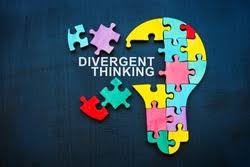Online Live Reading Course for adults: My Reflection on Teaching Reading
It had been a while since I taught a reading course, so at first, I felt nervous and was a little rusty. I had to reflect back on what type of training had assisted me in 1996 when I was an 18-year-old, graduating high school reading at an elementary level. At that point in my life, I was enrolled in a remedial college program that focused heavily on explicit, systematic, direct, and sequential multisensory instruction.
Students need to crack a code to learn to read. This includes understanding the language structure and mastering certain subskills to become proficient and advanced readers (Wolf, 2007)
This is not always a natural process and is one that can be very difficult (Moats, 2020; Westwood, 2008). Further, low word recognition skills among adult learners could be a direct result of a lack of access to high quality language and literacy instruction throughout early school years (Sabatini, 2009). When these students arrive in college classes still needing to learn to read, access and affordability become major issues for many adults.
My life experiences and the knowledge I gained navigating an undergraduate degree, a master’s degree, and a Ph.D. have prepared me for this opportunity- to help adult students improve their reading. The recent reading course I taught focused on word-recognition, vocabulary, and morphology for adult learners. The course was for 16 weeks, four days a week, for 50 minutes.
For the first two weeks of class, we had in-depth conversations on topics such as: What Is Phonological Awareness?, Louisa Moats: Spelling, and the Four Part Processor (Adams, 1990). These foundational topics helped set the stage for the remainder of the semester. Students had opportunities to examine words and develop an appreciation for a language system that has many rules and can seem complex at first. They were also taught decoding and encoding strategies.
As discussed in the SARA Summary Report (click here), “At Post-test, each of these students was able to complete the entire battery, which is evidence of stamina and confidence in their growing reading skills…” For a small pilot course, where students did not always show up daily because of various life situations, and where we faced technical issues, I had to think “outside of the box” to keep students engaged and motivated. Nevertheless, students were building literacy and language skills, confidence, and gaining HOPE!
Overall, I am very proud of what this group accomplished. The results are promising, and I am excited about the future of this course at Madison College. These students rejuvenated me. With everything I learned teaching this pilot course, I am excited to spend the summer designing the new and improved course for the fall. I have a good idea of what can be covered in 64 hours, and I want to add reading comprehension to our syllabus. This course allowed me to feel both accomplished and inspired, and the students can take their new and improved reading skills into the next phase of their lives.
Shawn Anthony Robinson PhD




Comments
Post a Comment